Combat ships. Cruisers. Paradox-style cardboard compromise
If so, then we will return to France, at a time when the Americans were working on "Pensacola", which was discussed in the last publication.
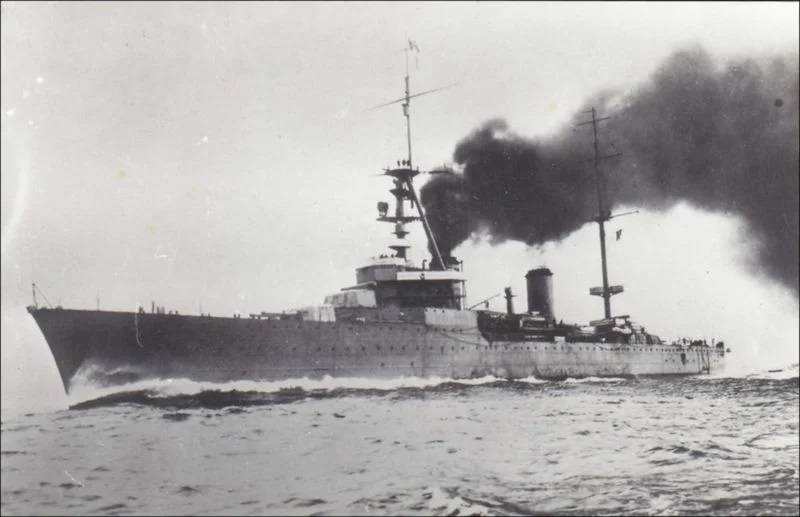
As soon as the ships were hit by the Washington Agreement, the French responded. Very quickly, which was quite natural, because at that time France actually did not have cruisers. The most "fresh" were built in 1906, that is ... you understand. Armored / armored deck, past the war. In the 20s - not just funny.
Therefore, immediately after the signing of the Washington documents, the French naval general staff ordered the construction of new cruisers. Naturally, based on a displacement of 10 tons and 000 mm main guns.
But in the plans, these were not squadron ships that would work in conjunction with battleships or perform other functions. The new cruisers were destined for the role of fast but heavily armed scout scouts. As if hinted that when meeting with colleagues from the opposite camp, these cruisers will have an advantage that is fatal for the enemy.
The project of the first post-war cruisers "Duguet-Truin" was taken as a basis, which increased by 2 tons in displacement. However, from previous articles, we already know perfectly well that “we want” and “000 tons” are about nothing.
As a result, they decided to design two ships: one with the highest possible speed, to the detriment of protection, and the other with enhanced protection by reducing speed. The second is the future Suffren.
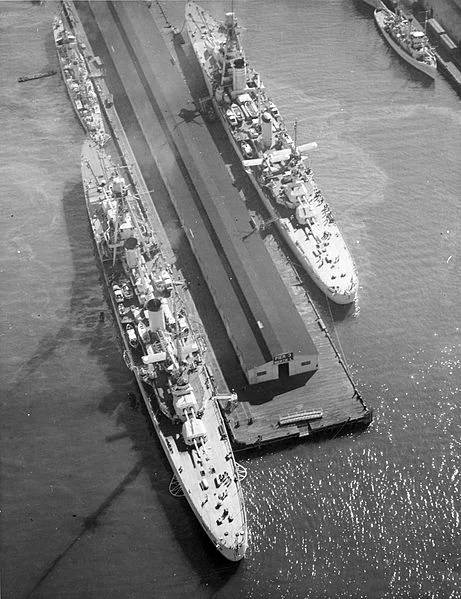
But according to the first project, everything immediately became very sad. We realized that Duge-Truin + 2000 tons is not enough for such a ship.
The new cruisers were to carry eight 203-mm main-caliber guns, four 100-mm anti-aircraft guns, as well as two 550-mm four-tube torpedo tubes and anti-submarine bombers.
It didn't work out, and I had to "cut it alive". Torpedo tubes and bombs were completely removed, instead of 100-mm very promising station wagons, 75-mm anti-aircraft guns were installed, a plus was the replacement of 40-mm licensed "pom-poms" with new anti-aircraft guns with a caliber of 37 mm.
And the speed could not be touched, it had to be 34 knots. So what was left for the designers? That's right, remove the armor. More precisely, they could not even lay it down properly, because 450 tons of armor on a ship of 10 tons of displacement - well, it's not even funny, but tragic. Let me remind you that the Italian "Trento", which I once criticized for the lack of armor, the weight of the armor was 000 tons. Twice as much. And the British "County" with its 880 tons and generally looked like a knight chained in steel.
No wonder the French sailors called the cruisers "cardboard". In this regard, they turned out to be even more "thin" than their Italian counterparts.
But, in general, the lack of booking - this was the scourge of all the first cruisers - "Washington" in all countries. As for our heroes, at first they were enrolled in light cruisers, and only after the London Agreement of 1930 prescribed the differences between the two classes of cruisers, the Duquesne suddenly became the first heavy cruisers.
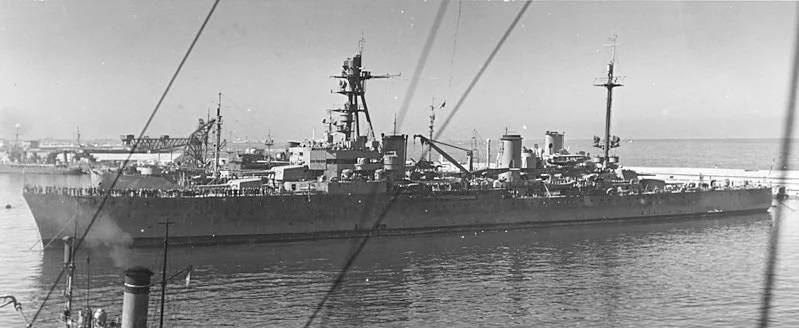
They named the ships after historical personalities.

Abraham Duquesne, Marquis du Boucher, Vice Admiral of the French fleet - one of the greatest sea heroes of France, who fought his entire adult life, and, I must say, excellently.
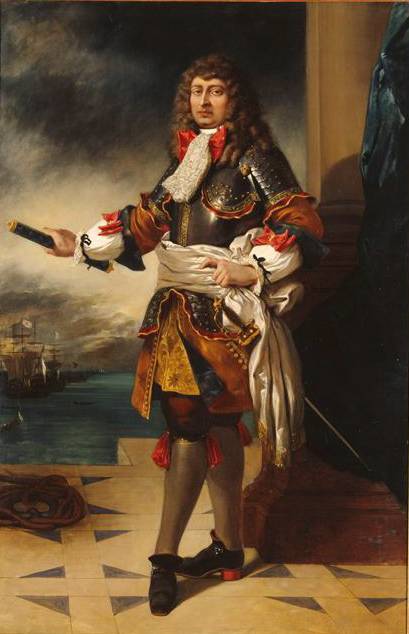
Anne Hilarion Comte de Tourville is a student and companion of Duquesne.
Personalities are more than worthy, the only question is how worthy the ships were ...
So, what were these ships in terms of performance characteristics?
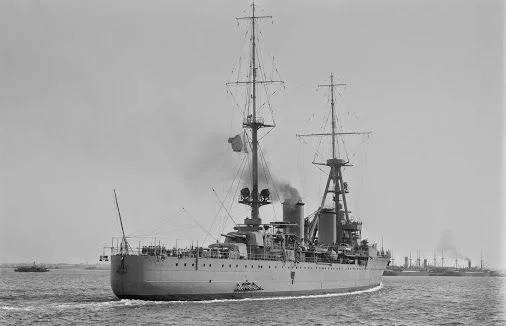
Displacement:
- standard: 10 160 t
- normal: 11 404 t
- full: 12 435 t
Dimensions:
- length: 185 m
- width: 19,1 m
- draft: 5,85 m
Power point:
4 TZA "Rateau-Bretagne", 8 boilers "Gtiyot - clu Temple" with a capacity of 120 hp
Speed:
34 node
Booking:
- box-shaped protection of cellars from 20 to 30 mm
- towers, barbets, wheelhouse - 30 mm
weaponry
- 4 x 2 guns М1924 203 mm;
- 8 x 1 anti-aircraft guns 75 mm М1924;
- 8 x 1 anti-aircraft guns 37 mm M1925;
- 6 x 2 Hotchkiss machine guns 13,2 mm;
- 2 x 3 550 mm torpedo tubes;
- 1 catapult,
- 2 seaplanes
Crew:
605 people
(the flagship has 637 people)
It turned out to be a rather strange ship, as you can see: on the one hand, it slightly (by 1 knot) surpassed the destroyers of that time in speed (Burrask issued 33 knots), on the other hand, the armor was like that of the destroyer, but a little thicker.
The initial assumption about the concept of its use as a scout capable of "hanging" enemy scouts looks a little self-confident. Reservation of 30 mm - this, sorry, will not protect even from the main caliber of destroyers (100-130 mm). Speed ... Yes, they hoped for it, but the subsequent experience of the war (especially among the Italians) showed that in vain.
Since the "Duguet-Truin" was taken as a model, the "Duquesne" also retained its semi-canopy design. In other countries, this concept was abandoned, and the French themselves subsequently ceased to build such cruisers. Still, the flush-deck concept was more profitable from the point of view of shipbuilders in terms of strength.
"Duquesne" looked like an ancestor. It's hard to say if this is good or bad. If France fought at sea ... Of course, it is unpleasant to find a light cruiser, and then suddenly realize that this is his relative with 203-mm guns.
Armor
A few words about booking, which in fact did not exist. Box-shaped protection of ammunition magazines. Armor sheets with a thickness of 30 mm on the sides and 20 mm on the "roof" and traverses. Tiller compartment - sheets 17 mm thick.
The towers and barbets were like the Duguet-Truin's, protected by double-layer armor. Tower 15 + 15 mm, barbet - 20 + 10 mm.
The conning tower also had two-layer armor of 20 + 10 mm. The upper deck was made of regular steel, 22 mm thick.
weaponry
Everything here is almost beautiful. The French engineers were staring at the British ships, so it turned out similar. Since the French did not have their own 203 mm guns until this moment, a 203-mm M1924 gun with a barrel length of 50 calibers was developed especially for the cruisers.
The gun turned out to be very simple, but therefore very reliable and with good characteristics. Two types of shells: armor-piercing weighing 123,1 kg and high-explosive fragmentation weighing 123,8 kg. The same weight provided the same ballistics of the projectile, which was useful in combat conditions, since it did not require additional zeroing when changing the type of projectile.
The projectile flew with a very good initial speed of 850 m / s at a distance of 31,5 km at an elevation angle of the trunks of 45 degrees. The range was even considered excessive, because the charge was reduced from 53 to 47 kg. The initial speed dropped to 820 m / s, and the range fell to 30 km.
At the very beginning of World War II, a new armor-piercing shell weighing 143 kg entered service.
In 1939, an innovation was introduced: a dye was added to the projectile charge to facilitate zeroing in the event that several ships were firing. At the Duquesne, the explosions were colored red, the shells of the Tourville were yellow.
The idea is very interesting, but not very simple to implement. In fact, the two ships had to produce two different ammunition sets, which was not very convenient. But if in battle both cruisers fired at one enemy ship, then this would undoubtedly give a good advantage.
The standard ammunition load was 150 rounds per barrel. The number of armor-piercing and HE shells could vary depending on the tasks assigned.
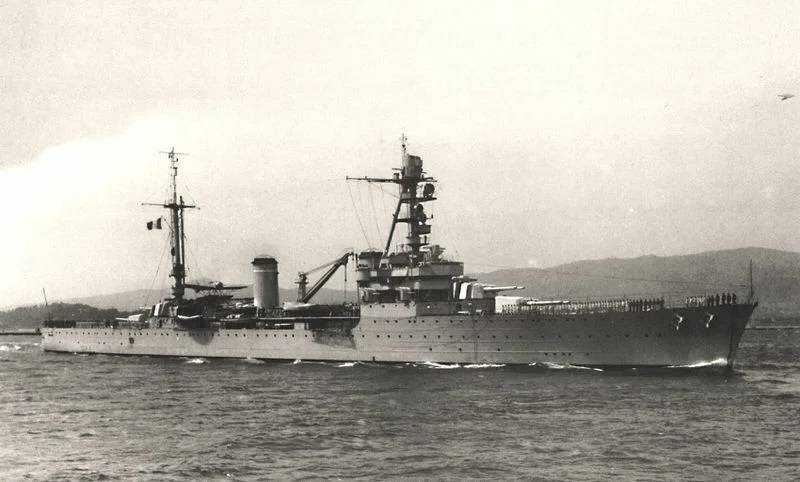
Artillery fire control was carried out from the KDP located on the foremast. For this, two rangefinders were installed on the site, with a base of 3 and 5 meters. The second, spare post, was in the conning tower. The central artillery post was located on the upper platform and was equipped with a 1924 model computer table and two auxiliary computers of the "aviso" type. On the elevated towers, 5-meter rangefinders were installed, with the help of which the crews could independently control the fire of the group of towers.
The anti-aircraft armament has increased in comparison with the "Duguet-Truin". Of course, "Duguet-Truin" criticized for the lack of such is not an indicator at all, but nevertheless. Compared to him, the Duquesne simply bristled with barrels.
Four 75 mm anti-aircraft guns were installed on the side on the first tier of the superstructure, as in the "D-T", and four more - on the boat deck.
The air defense of the near zone was 8 of the newest 37-mm M1925 semi-automatic anti-aircraft guns. These were very good guns, a projectile weighing 725 grams flew at a speed of 850 m / s, the rate of fire reached 40 rounds per minute, and the firing range was up to 7 m.
And, which is natural for that time, anti-aircraft weapons were not without Hotchkiss machine guns. There was little sense from them, but at first they installed four 8-mm M1914 machine guns on the ships, and in 1934, 4 coaxial 13,2-mm Hotchkiss M1931 machine guns appeared on the cruisers' poop. Large-caliber machine guns at the beginning of the war still posed at least a small, but a threat to aircraft. Subsequently, the machine guns were equipped with armored shields.
Torpedo armament consisted of two three-tube 550-mm torpedo tubes of the 1925T type, located on the upper deck between the tubes. In the superstructure between the vehicles there were 3 spare torpedoes and a reloading mechanism. Targeting vehicles and firing torpedoes could be carried out remotely from the conning tower.
In addition to torpedoes, the cruisers could take 15 depth charges weighing 35 kg. The French navy adopted a system of designating depth charges by the weight of the warhead. The total weight of a 35-kg depth charge was 52 kg.
Duquesne and Tourville became the first French cruisers to have aviation armament was part of the project. In general, the catapult for launching ship seaplanes was tested on Primoga, but it was there that it became clear that it was very important to place the catapult correctly. Ut is not the best place, the catapult interfered with the work of the aft group of the towers, and the planes were flooded during the rough seas.
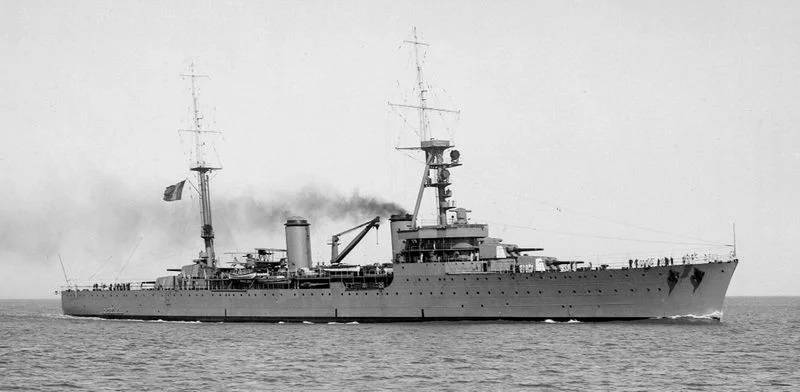
Therefore, on "Duquesne" and "Tourville" the catapult was placed between the second tube and the mainmast. A 12-ton crane with a boom length of 12,3 m, which was attached to the base of the mainmast, was used to raise and lower the seaplanes into the water.
Cruisers could carry 2 seaplanes. The first in a combat position was placed on the catapult, the second on the boat deck between the pipes. Used seaplanes "Loire-Gourdou-Lesser" L-3, which soon replaced the float monoplane "Gourdou-Lesser" GL-810/811 / 812HY, and in April 1939, the cruisers received flying boats "Loire-130".
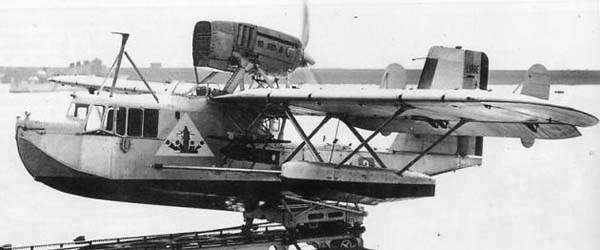
Power point
Eight boilers of the "Guyot-du Temple" type with a steam pressure of 20 atmospheres, four TZA type "Rato-Bretagne", each with a pair of forward and one reverse turbines. The rated power of each unit was 30 hp.
Both cruisers during the tests were unable to demonstrate outstanding results and only confirmed the design speed of 34 knots.
"Duquesne" issued 35,3 knots on a short segment, but was able to keep the declared speed of 34 knots for only 4 hours. "Tourville" is even worse: the maximum speed is 36,15 knots and only 33, 22 knots for 6 hours.
But in general, the cruisers were considered decent in terms of speed, because when fully loaded, they calmly developed 31 knots without forcing the turbines and could hold 30 knots for about a day at half the power of the power plants.
The Duken-class cruisers had good seaworthiness. It was believed that they were in no way inferior to the British cruisers of the "County" type. Due to the zygomatic keels, the "Duques" had a moderate roll and could keep the speed of 30 knots even with waves of 5 points.
The habitability of the cruisers was criticized. The forecastle design deprived the ships of many rooms, so the crew had a difficult time. In addition, the ventilation of the cockpits turned out to be unsatisfactory, which further complicated the life of the crew in the southern latitudes.
In general, the ships turned out to be pretty decent, if we close our eyes to the lack of armor. Therefore, when in the 30s ships of the next generation, more well protected, began to appear, the first heavy French cruisers began to become obsolete.
There was even a project to convert cruisers into aircraft carriers, but it did not receive proper implementation for many reasons.
The ships, quite naturally, have undergone a number of upgrades throughout their service.
At the end of 1943, catapults were dismantled from both cruisers and aircraft were removed. In March 1944, 4 37 mm anti-aircraft guns were replaced at Tourville with more efficient 40-mm Bofors assault rifles.
At the end of the war, both cruisers underwent modernization, during which torpedo tubes, main masts and rangefinder posts on the conning houses were dismantled. French-made anti-aircraft guns 37 mm were replaced by 8 "Bofors". There were plans to install quadruple Bofors on ships, but these plans were abandoned.
Instead, the cruisers bristled with the barrels of the 20-mm "Erlikonov", the "Duquesne" received 16, and the "Tourville" - 20 such submachine guns, which definitely brought the ships to a confident level in terms of air defense among classmates.
Combat service
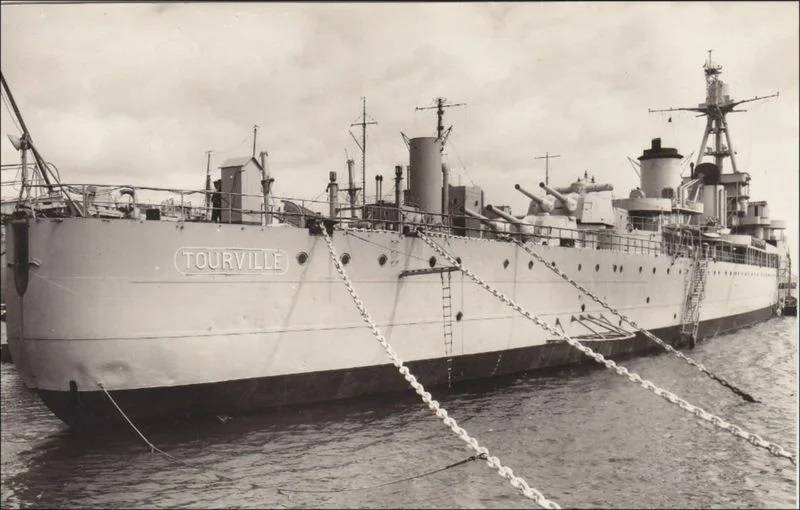
Duquesne and Tourville began service in May 1928, combining testing with additional equipment installation. The ships made training trips around the world, visited the French colonies, and the Tourville sailed around the world in 1929. The nine-month cruise passed without a single breakdown of the mechanisms, which left the most favorable opinion about the new ships.
In November 1929, the 1st Light Division of the 1st Squadron was formed in Brest, which included the flagship Duquesne, Tourville and the newly commissioned Suffren. The division's cruiser was charged with training the naval academy's midshipmen.
With the beginning of the war, Tourville operated in the Mediterranean. During a patrol between Bizerte and Beirut in December 1939, the cruiser intercepted and inspected 32 ships, and in January-February 1940 transported a cargo of French gold from Toulon to Beirut.
Duquesne was based in Dakar, where it remained until April 1940, searching for German raiders in the Central Atlantic. However, in terms of results, it was not very good.
In May 1940, both cruisers were assigned to Formation X, which was to operate in the Mediterranean in conjunction with the British fleet. The ships took part in several operations, for example, the raid on the Dodecanese Islands. Further, the compound was based in Alexandria, where the crews learned about the truce.
Unlike other French naval bases, there were no battles between the French and the British in Alexandria. The ships were disarmed but remained under French control.
In 1942, the French colonies in North Africa went over to the side of the Allies, or rather, were annexed. The new administration of the territories began negotiations with the commander of the squadron in Alexandria, Admiral Godefroy, about the joining of his ships to the coalition, but negotiations dragged on until 1943.
In May 1943, the agreement was concluded, and the ships of the Godefroy squadron were again put into service. "Duquesne" and "Tourville" went to Dakar and together with "Suffren" made up 1 squadron of cruisers. The squadron fought the German blockade breakers in the Atlantic until early 1944. True, the frankly small range of action did not allow "Duquesne" and "Tourville" to operate effectively, and therefore they were often not involved in raids.
"Duquesne" participated in the Normandy landings, albeit in reserve.
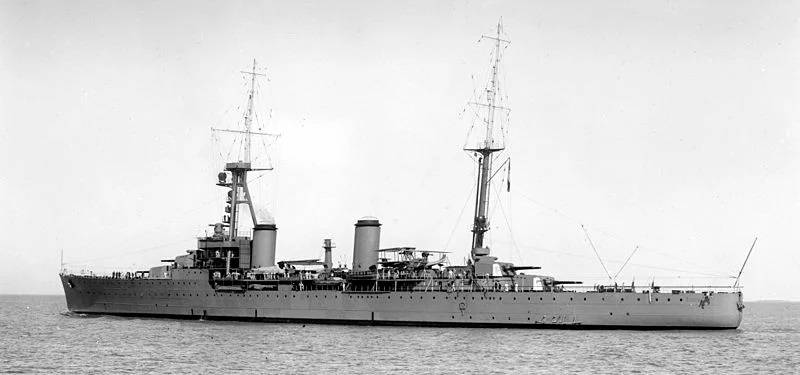
At the end of the war, the cruisers participated in supporting the forces of the cleanup of the coast of France, and then left for repairs.
After the war, the cruisers returned to service, and then Indochina became the arena of their actions, in which events important for France developed. "Duquesne" and "Tourville" made two trips each, participated in the re-occupation of Tonkin.
In August 1947, "Duquesne" was put into reserve, then transferred to Algeria as a base ship for amphibious forces, and then in 1955 she was excluded from the fleet, after which it was sold for scrap in 1956.
From the end of 1948 the Tourville was used as a floating barracks in Brest. It was expelled from the fleet in 1961, and in 1963 it was finally dismantled for metal.
31 and 37 years old. Quite worthy.
Contrary to the opinion that today dominates the attitude of French heavy cruisers, the first heavy cruisers in France were created as well-armed and fast scouts. Reconnaissance, not protection of communications or actions as part of a squadron of battleships. Of course, the protection of trade communications was taken into account, but was not the main one. For this, the ships of the "Duquesne" class still did not have a normal reservation.
The first is always difficult. The first heavy cruisers in France had a good set of advantages: excellent seaworthiness, good speed, excellent main battery artillery. By the middle of the war, after modernization, the cruisers became carriers of quite decent air defense, which also could not but affect the combat capability of the cruisers.
But there were more than enough shortcomings. These cruisers turned out to be the weakest in terms of booking among all the heavy cruisers in the world. In addition, the range of the French cruisers was also the worst of all the participants in the Second World War.
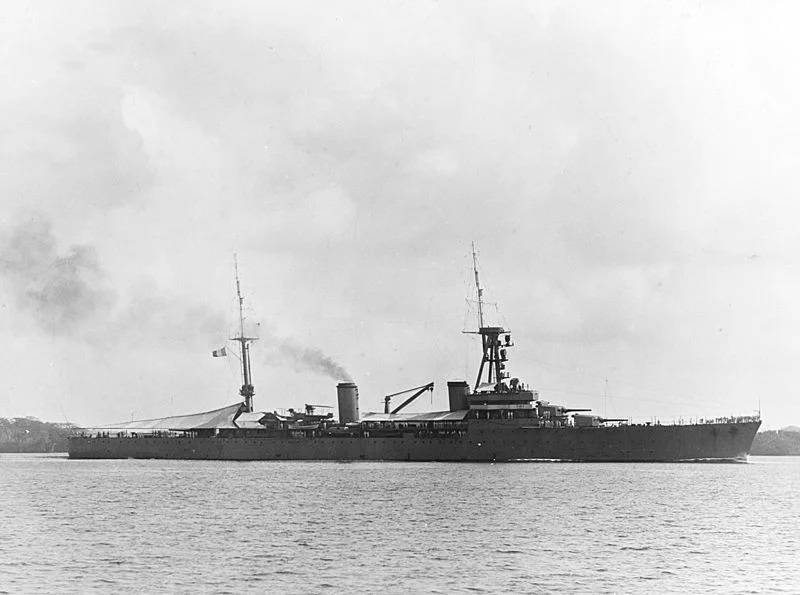
But in general, all the first "Washington" cruisers were an absolute compromise between the displacement and the ability to equip the ship with everything you need. And the strengthening of some qualities had to be created due to the weakening (sometimes significant) of others.
But even in this case, "Duquesne" and "Tourville" could serve as an example of imbalance in characteristics.
Probably, these ships were very lucky that they did not take part in any normal naval battle during their long service life. The absence of a fight with at least an approximately equal enemy could significantly reduce the service life. But in this case, it turned out quite confidently.
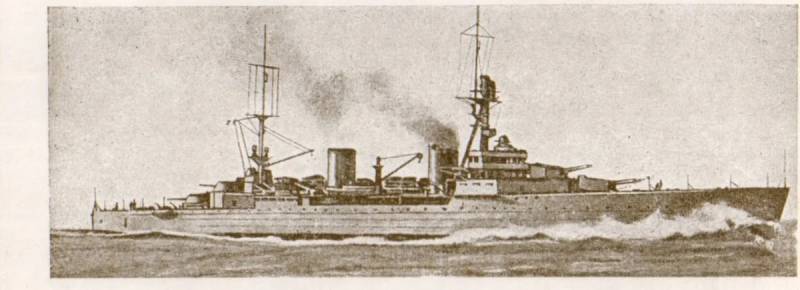
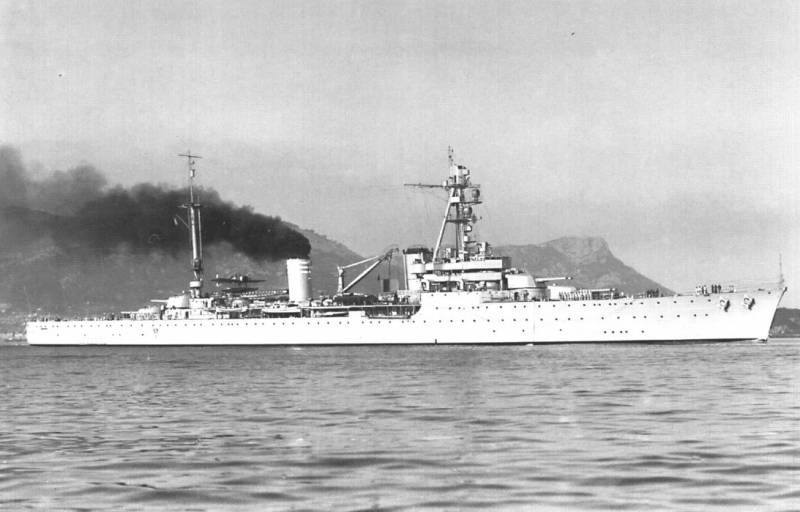
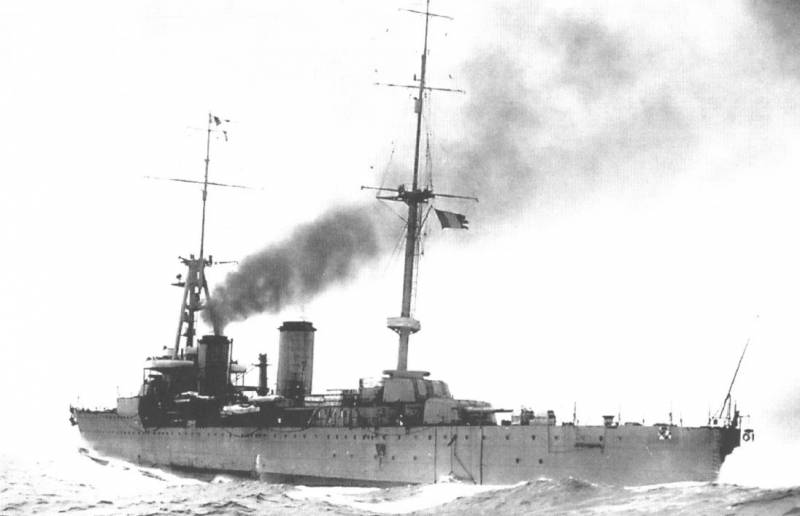
Information